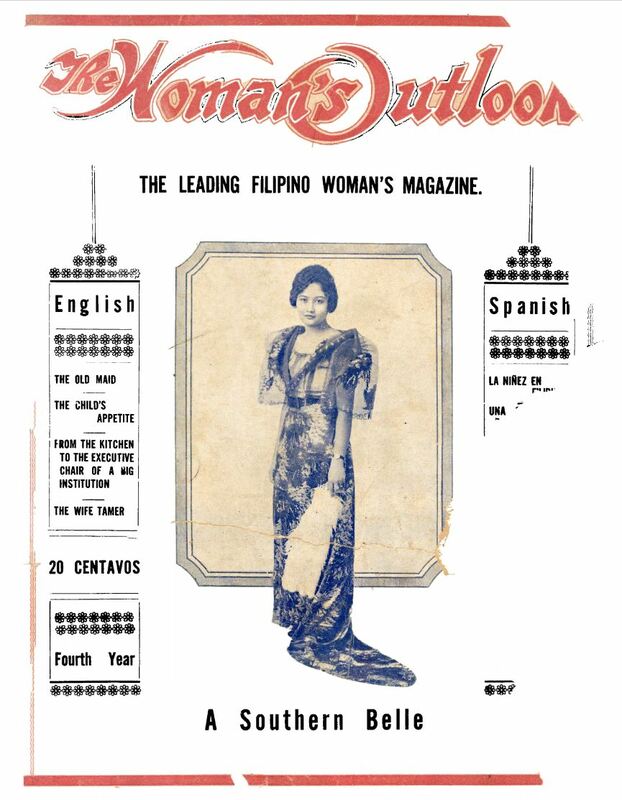
Philperiodicals-global
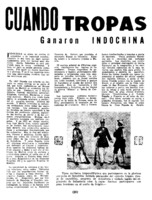
Cuando tropas Hispano-Filipinas ganaron Indochina para los franceses
Semana de Manila was also linked to Spanish Franocist Foreign Propaganda, the Spanish
Speaking community of Manila, and the Catholic Church, especially the Spanish Friars, which
had played an important role in Filipino history. On September 7, 1950, J.E Casariego published
a historical article about the Cochinchina campaign (1858-1862), a joint naval expedition force
on behalf of the French Empire and the Kingdom of Spain against the Nguyễn period
Vietnamese state that inaugurated the French conquest of Vietnam.
Beyond the factual information in the article (most of the Spanish troops were in fact Filipinos),
Casariego showed both resentment of France (to whom, he argues, Spain gifted an empire) and
a staunch defense of colonial and “civilizing intervention”. This suggests that for many of the
hispano-centric Filipinos, who identified with the Catholic Religion and were somehow nostalgic
for the Spanish Empire, the advance of communism during the Cold War (and specifically the
conflict in Vietnam) was seen as a menace to civilization akin to the paganism that in 1857
burned Spanish Missionaries in Tonkin, and, therefore a movement backward in the universal
history that Spanish (and in general European) colonialism was seen to have introduced into the
Philippines and Asia.
Speaking community of Manila, and the Catholic Church, especially the Spanish Friars, which
had played an important role in Filipino history. On September 7, 1950, J.E Casariego published
a historical article about the Cochinchina campaign (1858-1862), a joint naval expedition force
on behalf of the French Empire and the Kingdom of Spain against the Nguyễn period
Vietnamese state that inaugurated the French conquest of Vietnam.
Beyond the factual information in the article (most of the Spanish troops were in fact Filipinos),
Casariego showed both resentment of France (to whom, he argues, Spain gifted an empire) and
a staunch defense of colonial and “civilizing intervention”. This suggests that for many of the
hispano-centric Filipinos, who identified with the Catholic Religion and were somehow nostalgic
for the Spanish Empire, the advance of communism during the Cold War (and specifically the
conflict in Vietnam) was seen as a menace to civilization akin to the paganism that in 1857
burned Spanish Missionaries in Tonkin, and, therefore a movement backward in the universal
history that Spanish (and in general European) colonialism was seen to have introduced into the
Philippines and Asia.
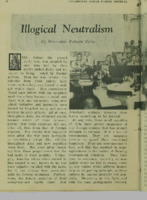
Illogical neutralism
Senator Eulogio Balao (1907-1977), a WWII veteran and head of Quirino’s anti-Huk campaigns,
he was Secretary of Defense for President Magsaysay between 1956 and 1957. In June
1956, he published Illogical Neutralism in the Philippines Armed Forces Journal where he
made a defense of the SEATO agreement that expressed the government's view on the
issue.
Balao saw WWII as an event that had waked Asian nationalism and independence after a period
of docility and foreign rule, but he stated that neutrality, seen as a product of anti-colonial era
anxieties, was an impulsive and baseless fear that could condemn weak nations to be devoured
not by Western, but by Asiatic colonialism, such as the Japanese or the Russian. During a period
marked by democracy, when no western country would consider colonizing, only Russia, due to
its dictatorial and totalitarian nature, had colonies, Balao argued.
Bllao partially expresses the fear that, after the conflicts in Korea and Vietnam, only armed force
could stop communism. For small, young countries such as the Philippines, that meant allying
with “an unselfish America” through initiatives such as the SEATO to preserve freedom,
religion, and a wholesome life that communism wasn’t seen to provide.
he was Secretary of Defense for President Magsaysay between 1956 and 1957. In June
1956, he published Illogical Neutralism in the Philippines Armed Forces Journal where he
made a defense of the SEATO agreement that expressed the government's view on the
issue.
Balao saw WWII as an event that had waked Asian nationalism and independence after a period
of docility and foreign rule, but he stated that neutrality, seen as a product of anti-colonial era
anxieties, was an impulsive and baseless fear that could condemn weak nations to be devoured
not by Western, but by Asiatic colonialism, such as the Japanese or the Russian. During a period
marked by democracy, when no western country would consider colonizing, only Russia, due to
its dictatorial and totalitarian nature, had colonies, Balao argued.
Bllao partially expresses the fear that, after the conflicts in Korea and Vietnam, only armed force
could stop communism. For small, young countries such as the Philippines, that meant allying
with “an unselfish America” through initiatives such as the SEATO to preserve freedom,
religion, and a wholesome life that communism wasn’t seen to provide.

A new strategy for Korea?
A few months after the Korean Armistice Agreement (27 July 1953), which put an end to the
Korean War and established the actual border at the 38th parallel, the Philippines Armed Forces
Journal reprinted an article from Military Review by Brigadier General Samuel Lyman Atwood
Marshall, an important journalist appointed chief combat historian of the U.S. Army during
WWII and the Korean War.
The strongly anti-communist article took up against Communist China, seen as the primary and
real enemy (at least in the Korean War), not the Soviet Union. For Marshall, the Chinese knew
what was at stake and had a clear strategy, having constantly outmatched the US-lead coalition:
the Chinese knew their objective was not the prevention of killing, but victory, and Marshall
believed the US had conformed with a stalemate, without ever committing enough resources.
Marshall advocated for “a new era of firmness” and enough budget to prepare for the next
communist aggression in Asia.
The reprint also included several pictures of the Filipino troops, fighting, praying, and enjoying
the visit of Filipino stars such as Pablo Virtuoso, Cora Madrid, or Rumelia Flores. Thank to that
we can imagine how their life was during the armistice negotiations
Korean War and established the actual border at the 38th parallel, the Philippines Armed Forces
Journal reprinted an article from Military Review by Brigadier General Samuel Lyman Atwood
Marshall, an important journalist appointed chief combat historian of the U.S. Army during
WWII and the Korean War.
The strongly anti-communist article took up against Communist China, seen as the primary and
real enemy (at least in the Korean War), not the Soviet Union. For Marshall, the Chinese knew
what was at stake and had a clear strategy, having constantly outmatched the US-lead coalition:
the Chinese knew their objective was not the prevention of killing, but victory, and Marshall
believed the US had conformed with a stalemate, without ever committing enough resources.
Marshall advocated for “a new era of firmness” and enough budget to prepare for the next
communist aggression in Asia.
The reprint also included several pictures of the Filipino troops, fighting, praying, and enjoying
the visit of Filipino stars such as Pablo Virtuoso, Cora Madrid, or Rumelia Flores. Thank to that
we can imagine how their life was during the armistice negotiations
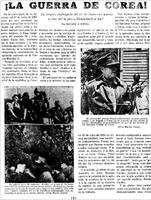
¡La Guerra de Corea!
Semana de Manila was also linked to Spanish Franocist Foreign Propaganda, publishing many
articles by Falangist intellectuals and defending Hispanism, anti-communism, and the lifting of
any restrictions on Franco’s Spain, by then diplomatically isolated. Rafael S. Ripoll, one of the
directors of the Spanish-speaking journal El Debate (1919- ca 1970) published an article on
September 7, 1950, remembering the start of the Korean War on June 5.
The article paid special attention to the decision-making process within the UN, highlighting the
Russian collusion with the invasion and the belief that communists would now use both
subversion and direct military action in his conquest of independent nations, menacing the
Philippines, involved in the conflict with a contingent led by Mariano C. Azurin and a key player
in the US global defense system.
Typically for the cold-war period, the article finished hoping for a victory of freedom with the
help of god and faith in the cause. Nevertheless, Ripoll mimicked the Francoist rhetoric of the
alienation of the “reds”, making communists foreign enemies of the nation, dehumanizing them,
and legitimizing their total destruction. Interestingly, for Ripoll, these red hordes that invaded the
Republic of Corea were as barbaric as the Japanese.
articles by Falangist intellectuals and defending Hispanism, anti-communism, and the lifting of
any restrictions on Franco’s Spain, by then diplomatically isolated. Rafael S. Ripoll, one of the
directors of the Spanish-speaking journal El Debate (1919- ca 1970) published an article on
September 7, 1950, remembering the start of the Korean War on June 5.
The article paid special attention to the decision-making process within the UN, highlighting the
Russian collusion with the invasion and the belief that communists would now use both
subversion and direct military action in his conquest of independent nations, menacing the
Philippines, involved in the conflict with a contingent led by Mariano C. Azurin and a key player
in the US global defense system.
Typically for the cold-war period, the article finished hoping for a victory of freedom with the
help of god and faith in the cause. Nevertheless, Ripoll mimicked the Francoist rhetoric of the
alienation of the “reds”, making communists foreign enemies of the nation, dehumanizing them,
and legitimizing their total destruction. Interestingly, for Ripoll, these red hordes that invaded the
Republic of Corea were as barbaric as the Japanese.
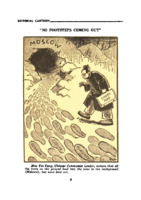
No Footsteps coming out
The Cross: National Catholic Magazine was the official bi-monthly organ of the Knights of
Columbus in the Philippines, a catholic order brought to the Philippines in 1905 and filipinized
in 1918. The Cross included all kinds of opinion articles, but also reader’s contributions, prayers,
news digest, and book reviews. During the Cold War, it followed a strong anti-communist line,
following Piux XII's encyclical Summi Maeroris (1950).
On May 1950, it expressed the fears of Asian Catholics, after the victory of Mao Zedong in the
Chinese civil war and the establishment of the People's Republic of China on 1 October 1949 with
an editorial cartoon, “No Footsteps coming out” from the Moscow Cave. The image, portraying Mao
dressed like a Mandarin, suggested the end of traditional Chinese culture, to be devoured by the
Soviet Union, and the submission of the Chinese State to the Soviet strategy as it had happened in
Eastern Europe. In March 1950 the Chinese government launched a Stalinist anti-
counterrevolutionaries campaign the image interpellated the reader's fear of an enemy now at the
doors of the Philippines. As the front page of the number shows, the Catholic Church saw itself
especially menaced by these soviet victories.
Columbus in the Philippines, a catholic order brought to the Philippines in 1905 and filipinized
in 1918. The Cross included all kinds of opinion articles, but also reader’s contributions, prayers,
news digest, and book reviews. During the Cold War, it followed a strong anti-communist line,
following Piux XII's encyclical Summi Maeroris (1950).
On May 1950, it expressed the fears of Asian Catholics, after the victory of Mao Zedong in the
Chinese civil war and the establishment of the People's Republic of China on 1 October 1949 with
an editorial cartoon, “No Footsteps coming out” from the Moscow Cave. The image, portraying Mao
dressed like a Mandarin, suggested the end of traditional Chinese culture, to be devoured by the
Soviet Union, and the submission of the Chinese State to the Soviet strategy as it had happened in
Eastern Europe. In March 1950 the Chinese government launched a Stalinist anti-
counterrevolutionaries campaign the image interpellated the reader's fear of an enemy now at the
doors of the Philippines. As the front page of the number shows, the Catholic Church saw itself
especially menaced by these soviet victories.
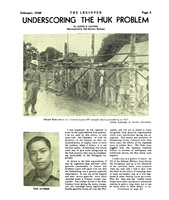
Underscoring the HUK problem
The Legioner, was the official monthly organ of the Philippines Legion, a veteran association
created by Manuel Roxas in 1948. Its contents were mainly military, which made it a very
interesting source to understand the military conflicts of the period from a Filipino perspective.
In all the issues hold in the UPD collection the Huk insurgent appears as a very important topic.
Underscoring the HUK problem was written for the number of February 1948 by Alejo S.
Santos, representative of the 2nd district of Bulacan, and it’s interesting for the crude photos
(courtesy of Manila Chronicle) that it included. Santos, former CO of the Bulacan Military Area
during the Ocuppation, defended that violence was not the best means to solve the problem and
confirmed first hand that the Huk, one of the best anti-japanese guerillas, never stayed away
from the ways of peace or terrorized the people of Bulacan until Partido Komunista ng Pilipinas’
efforts to ameliorate farmers' conditions (and its electoral victory) were neglected by the Partido
Liberal, whose measures were ineffective against landlord rule. In fact, the victims of the
military actions were the poor barrio residents that only attended to destroy feudalism, which
only fueled the conflict.
created by Manuel Roxas in 1948. Its contents were mainly military, which made it a very
interesting source to understand the military conflicts of the period from a Filipino perspective.
In all the issues hold in the UPD collection the Huk insurgent appears as a very important topic.
Underscoring the HUK problem was written for the number of February 1948 by Alejo S.
Santos, representative of the 2nd district of Bulacan, and it’s interesting for the crude photos
(courtesy of Manila Chronicle) that it included. Santos, former CO of the Bulacan Military Area
during the Ocuppation, defended that violence was not the best means to solve the problem and
confirmed first hand that the Huk, one of the best anti-japanese guerillas, never stayed away
from the ways of peace or terrorized the people of Bulacan until Partido Komunista ng Pilipinas’
efforts to ameliorate farmers' conditions (and its electoral victory) were neglected by the Partido
Liberal, whose measures were ineffective against landlord rule. In fact, the victims of the
military actions were the poor barrio residents that only attended to destroy feudalism, which
only fueled the conflict.





